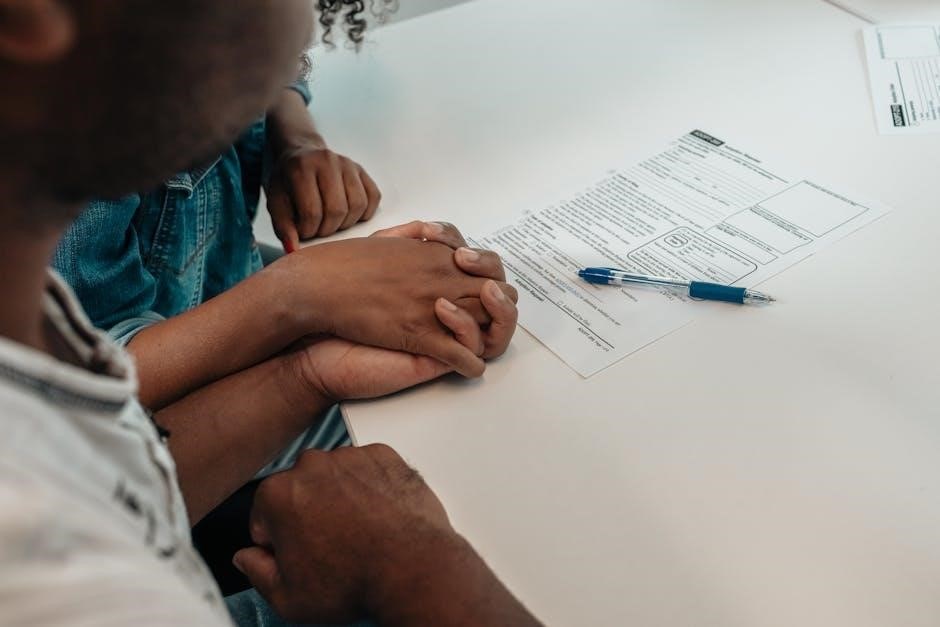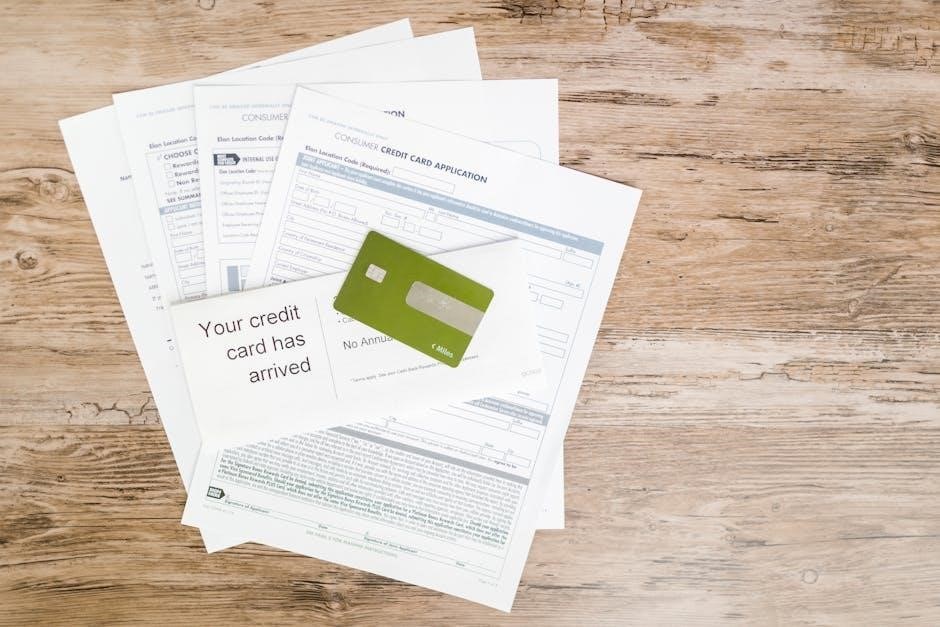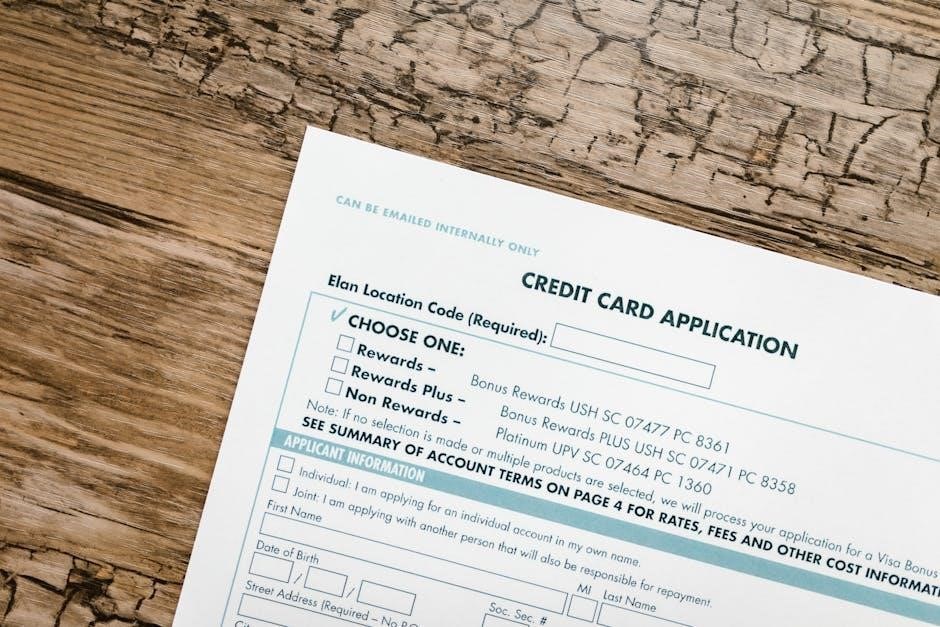
Understanding the Stolen Generations
The Stolen Generations refers to Aboriginal and Torres Strait Islander children forcibly removed from their families between 1900 and 1972 under assimilation policies, causing intergenerational trauma.
Definition and Historical Context
The Stolen Generations refer to Aboriginal and Torres Strait Islander children forcibly removed from their families and communities between 1900 and 1972 under assimilation policies. These removals, carried out by government agencies, churches, and missions, aimed to erase Indigenous cultures. The trauma caused by these actions has had lasting effects on individuals, families, and communities. Understanding this history is vital for addressing the injustices faced by survivors and their descendants. The term “Stolen Generations” was first popularized in the 1980s, highlighting the systemic racism and human rights violations perpetrated by colonial and government policies. Today, this history informs redress schemes and efforts to support survivors in Queensland and beyond, acknowledging the profound impact on Indigenous identities and cultures.
Impact on Aboriginal and Torres Strait Islander Communities
The Stolen Generations’ forced removals caused profound and lasting impacts on Aboriginal and Torres Strait Islander communities. Intergenerational trauma, loss of culture, language, and identity have persisted, affecting family structures and community cohesion. Many survivors experienced emotional and psychological scars, while their descendants continue to grapple with the legacy of these injustices. The disruption of cultural transmission has left communities struggling to reconnect with their heritage. The ongoing effects highlight the need for redress and healing initiatives to address the historical wounds inflicted by these policies. Acknowledging this trauma is essential for reconciliation and supporting survivors in their journey toward recovery and cultural restoration.
Key Policies and Practices Leading to Forced Removals
The forced removals of Aboriginal and Torres Strait Islander children were driven by government policies aimed at assimilation, particularly between 1900 and 1972. These policies sought to erase Indigenous cultures by integrating children into white society. Authorities, including police and welfare agencies, enforced these practices, often without parental consent. Children were taken from their families and placed in missions or foster care, leading to cultural disconnection. Racist ideologies justified these actions, viewing Indigenous peoples as inferior. The systematic removal of children, especially those of mixed descent, was a deliberate strategy to control populations and suppress Indigenous identities. These practices caused profound harm, leaving lasting scars on individuals, families, and communities.

Redress Schemes for Stolen Generations Survivors
Redress schemes aim to address the harm caused by forced removals, offering financial and emotional support. Queensland lacks a dedicated scheme, but survivors may access the National Redress Scheme or the Territories Stolen Generations Redress Scheme, which provides payments and wellbeing packages for eligible applicants.
Territories Stolen Generations Redress Scheme
The Territories Stolen Generations Redress Scheme provides financial and wellbeing support to survivors removed as children from their families in the Northern Territory, Australian Capital Territory, or Jervis Bay Territory before self-government. Announced in August 2021, the scheme offers payments to acknowledge the harm caused by forced removals. Applications opened on 1 March 2022 and will close on 28 February 2026. Eligibility requires applicants to be of Aboriginal or Torres Strait Islander descent, removed under 18, and by government or non-government agencies. The scheme aims to assist survivors in healing and rebuilding their lives. For assistance, applicants can contact 1800 566 111 or visit the Territories Redress website. This scheme is a crucial step toward addressing the historical injustices faced by Stolen Generations survivors in these regions.
National Redress Scheme
The National Redress Scheme primarily addresses institutional child sexual abuse but may offer redress to some Stolen Generations survivors in Queensland if their experiences align with the scheme’s criteria. Eligibility depends on the involvement of institutions covered by the scheme and the nature of abuse experienced. While not specifically designed for Stolen Generations, it provides an alternative avenue for survivors seeking acknowledgment and compensation. Queensland survivors must carefully review the scheme’s eligibility criteria, focusing on institutional involvement and abuse experienced. Legal counsel or specialized support services are recommended to navigate this complex process. The National Redress Scheme offers a pathway for healing and justice, though its applicability varies based on individual circumstances and institutional involvement.
Lack of Dedicated Scheme in Queensland
Queensland remains one of the few states without a dedicated redress scheme for Stolen Generations survivors, creating significant disparities in access to justice and healing. Despite hosting a substantial population of survivors, the state has not established a specific program for compensation or reparations. This absence forces survivors to seek alternative avenues, such as the National Redress Scheme, which primarily addresses institutional abuse and may not fully cover their experiences. Advocates emphasize the urgent need for Queensland to implement a state-specific scheme to address historical injustices and provide equitable support. The lack of a dedicated scheme complicates survivors’ paths to redress and underscores the ongoing challenges in achieving reconciliation and healing for affected communities.

Eligibility Criteria for Redress Schemes
Applicants must be of Aboriginal or Torres Strait Islander descent, forcibly removed as children, and removed by government or non-government agencies to qualify for redress schemes.
Aboriginal and Torres Strait Islander Descent
Eligibility for redress schemes requires applicants to be of Aboriginal or Torres Strait Islander descent. This criterion acknowledges the historical injustices faced by these communities. Applicants must provide documentation, such as birth certificates, family records, or statutory declarations from community elders, to prove their ancestry. This requirement ensures that redress measures are targeted toward those directly affected by forced removal policies. The emphasis on descent underscores the unique trauma experienced by Aboriginal and Torres Strait Islander peoples. By verifying heritage, the process aims to ensure that compensation and support reach those most impacted by the Stolen Generations legacy. This criterion is central to the application process for redress schemes.
Forced Removal as a Child
Applicants must prove they were forcibly removed as children under government or non-government policies. Removal often occurred under the guise of protection, with children taken by police, missions, or welfare agencies. This traumatic event severed cultural ties and caused lasting harm. Evidence like institutional records or testimonials is crucial for verification. The age criterion ensures support targets those most vulnerable during removals. This requirement highlights the historical practices targeting Aboriginal and Torres Strait Islander children, aiming to erase their identity. By focusing on forced removal as a child, redress schemes address the profound impact on individuals and communities, acknowledging the intergenerational trauma inflicted by these actions.
Removal by Government or Non-Government Agencies
Eligibility for redress requires proof of removal by government or non-government agencies, such as police, churches, or welfare organizations. These entities enforced policies of assimilation, often under the guise of “protection.” Survivors were frequently taken from their families without consent, leading to severe cultural disconnection and trauma. Documentation, like institutional records or police reports, is essential to verify these removals. The involvement of official agencies distinguishes these cases from other forms of separation, ensuring redress schemes specifically address state-sanctioned actions. This criterion acknowledges the systemic nature of the Stolen Generations, highlighting the role of institutions in perpetuating historical injustices. Such evidence is critical for validating claims and providing rightful compensation to survivors.

Application Process for Redress
The application process involves submitting a completed form, providing required documentation, and using online portals or support services to assist with the submission. Survivors can apply online or in person, with help from organizations like LinkUp Queensland. The process aims to streamline access to redress while ensuring all necessary evidence is included. Support services play a crucial role in guiding applicants through the steps, ensuring their claims are complete and accurate. Timely submission is encouraged to meet deadlines and facilitate a smoother review process. Applicants are urged to seek assistance if needed to navigate the system effectively.
Step-by-Step Guide to Submitting an Application
To submit an application for redress, survivors must first obtain the official application form, which is available online or through support services like LinkUp Queensland. The form requires detailed personal information, including contact details and documentation of removal. Applicants must gather necessary evidence, such as birth certificates, historical records, or statutory declarations. Once completed, the form can be submitted online via the Territories Redress Scheme portal or in person at designated locations. Applicants are encouraged to seek assistance from support services to ensure accuracy and completeness. After submission, the application is reviewed, and eligibility is assessed based on the provided documentation. Survivors can track their application status through the portal or by contacting support teams. Timely submission is crucial to meet deadlines and facilitate a smooth review process.
Required Documentation and Evidence
Applicants must provide specific documentation to support their claim, such as proof of Aboriginal or Torres Strait Islander descent and evidence of forced removal as a child. Personal identification, historical records, and statutory declarations are essential. Additional evidence may include institutional records, government files, or police reports confirming the removal. Oral histories or testimonies from family members or community elders can also be submitted if formal records are unavailable. Applicants are encouraged to consult support services like LinkUp Queensland to ensure all necessary documents are gathered and verified. Proper documentation is critical for a successful application, as it validates the applicant’s eligibility and experiences.
Role of Support Services in Assisting Applicants
Support services play a vital role in assisting Stolen Generations survivors with their redress applications. Organizations like LinkUp Queensland and legal advocacy groups provide guidance, emotional support, and practical assistance. These services help applicants gather required documentation, understand eligibility criteria, and navigate the complexities of the application process. They also offer cultural sensitivity and trauma-informed care, recognizing the emotional challenges of revisiting painful histories. Additionally, support services can advocate on behalf of applicants, ensuring their voices are heard and their rights are protected. For Queensland survivors, these services are particularly crucial due to the state’s lack of a dedicated redress scheme, helping them explore alternative avenues for justice and healing. Their role is essential in simplifying the process and empowering survivors to seek the redress they deserve.

Key Deadlines for Applications
The Territories Stolen Generations Redress Scheme accepts applications until February 28, 2026. Applications opened on March 1, 2022, with extended eligibility for deceased survivors until March 1, 2022.
Current Deadline for Territories Scheme
The Territories Stolen Generations Redress Scheme is currently accepting applications until February 28, 2026. The scheme opened on March 1, 2022, providing a five-year window for eligible survivors to submit their claims. This deadline ensures that survivors have ample time to gather necessary documentation and seek support. Additionally, families of deceased survivors who passed away between August 5, 2021, and March 1, 2022, can also apply on their behalf. It is crucial for applicants to submit their forms before the deadline to ensure their claims are processed. For assistance, applicants can contact the dedicated support team via phone or email. Timely submission is vital to access the financial and wellbeing package offered by the scheme.
Extended Eligibility for Deceased Survivors
The Territories Stolen Generations Redress Scheme extends eligibility to families of deceased survivors. Survivors who passed away between August 5, 2021, and March 1, 2022, are included, allowing their families to apply on their behalf. To do so, the main contact must be approved by the scheme. This provision ensures that the legacy of deceased survivors is acknowledged, and their families can access the financial and wellbeing package. Documentary evidence and approval are required to progress such applications. This extension highlights the scheme’s commitment to inclusivity and justice, even for those who have passed. Families are encouraged to seek assistance from support services to navigate the process. The deadline for these applications aligns with the general scheme deadline of February 28, 2026.
Importance of Timely Submission
Timely submission of applications is crucial for Stolen Generations survivors seeking redress. The Territories Stolen Generations Redress Scheme deadline is February 28, 2026, and missing this date may result in ineligibility. Survivors are advised to gather necessary documents early, such as removal records and descent proof, to avoid delays. Early submission ensures proper assessment and access to financial and wellbeing support. Delays may impact healing and justice efforts, emphasizing the need for prompt action. Legal and advocacy groups can assist with the process, ensuring applications are completed efficiently. Timely submission is vital for accessing the benefits provided by the scheme and contributing to reconciliation efforts.

Support Services for Survivors
Organizations like LinkUp Queensland and State Archives provide crucial support, helping survivors access records and navigate redress processes. Legal and advocacy groups also offer assistance, ensuring equitable treatment.
LinkUp Queensland and State Archives
LinkUp Queensland plays a vital role in supporting Stolen Generations survivors by reconnecting them with their families and culture. They assist in accessing historical records, providing emotional support during the redress process. The Queensland State Archives also offer critical resources, holding government records that document forcible removals. These records are essential for survivors seeking evidence to support their redress applications. Both organizations collaborate to help survivors navigate the complexities of accessing their histories and rights. Their services are instrumental in empowering survivors and their families to pursue justice and healing. Additionally, legal and advocacy groups complement these efforts, ensuring survivors receive comprehensive support throughout their journey.
Legal and Advocacy Groups
Legal and advocacy groups play a crucial role in assisting Stolen Generations survivors with redress applications and navigating the legal landscape. Organizations like Shine Lawyers specialize in representing survivors, providing expert legal advice and support. They often handle class actions and individual cases, ensuring survivors receive fair compensation for their traumatic experiences. These groups also collaborate with support services to streamline the application process and address systemic barriers. Their advocacy extends beyond legal aid, pushing for policy changes and equitable treatment for Queensland survivors. By championing justice, these groups empower survivors to seek redress and closure, acknowledging the historical injustices they endured. Their efforts are vital in fostering healing and reconciliation for affected communities.
Community-Based Support Networks

Community-based support networks are vital for Stolen Generations survivors, offering emotional, practical, and cultural assistance. These networks often include local Indigenous organizations, cultural groups, and family reunification services. They provide safe spaces for survivors to share their experiences, reconnect with their heritage, and access resources for redress applications. LinkUp Queensland, for example, specializes in reconnecting families and assisting with historical records, while Queensland State Archives helps survivors access documents related to their removal. These networks also organize workshops, forums, and cultural events to promote healing and resilience. By fostering community connections, they empower survivors to navigate the complexities of redress processes while strengthening their cultural identity. Such networks are essential for addressing the intergenerational trauma and supporting survivors in their journey toward justice and reconciliation.

Challenges Faced by Queensland Survivors
Queensland survivors face unique challenges due to the lack of a dedicated redress scheme, forcing reliance on alternative avenues like the National Redress Scheme, creating complexity and disparity.

Lack of State-Specific Redress Scheme
Queensland’s absence of a dedicated redress scheme for Stolen Generations survivors creates significant challenges. Unlike other states, Queensland has not established a specific program to address the historical injustices faced by its Indigenous population. This forces survivors to rely on alternative avenues, such as the National Redress Scheme or the Territories Stolen Generations Redress Scheme, which may not fully meet their needs. The lack of a state-specific scheme results in delays, emotional strain, and limited access to compensation and support. This disparity is particularly concerning given Queensland’s substantial Stolen Generations population. Advocates emphasize the urgent need for Queensland to implement its own scheme to ensure equitable treatment and promote healing for survivors.
Complexity of Alternative Avenues for Redress
Queensland survivors face significant challenges navigating alternative redress avenues due to the state’s lack of a dedicated scheme. The National Redress Scheme, primarily designed for institutional abuse, offers limited relief for Stolen Generations cases. Additionally, the Territories Stolen Generations Redress Scheme excludes many Queensland survivors due to geographic eligibility criteria. These alternatives often involve complex legal and administrative processes, requiring survivors to gather extensive documentation and understand intricate eligibility requirements. The emotional toll of reliving traumatic experiences while navigating these systems further complicates the pursuit of justice. Survivors may also encounter delays and uncertainty, highlighting the need for clearer, more accessible pathways to redress. This complexity underscores the urgent need for a Queensland-specific scheme to address the unique needs of its Stolen Generations survivors.
Impact on Healing and Reconciliation
The absence of a dedicated redress scheme in Queensland significantly hinders the healing and reconciliation process for Stolen Generations survivors. Many face ongoing emotional and psychological trauma, compounded by the lack of acknowledgment and compensation. The emotional toll of reliving traumatic experiences during redress applications further exacerbates pain. Survivors often struggle to find closure without formal recognition of their suffering. This delay in justice perpetuates intergenerational trauma, affecting families and communities. Reconciliation efforts are hampered when survivors feel excluded from equitable treatment compared to those in other states. The inability to access timely and fair redress underscores the urgent need for a Queensland-specific scheme to promote healing and foster reconciliation. Without proper acknowledgment, the wounds of the past continue to impede progress toward justice and restoration.

Importance of Acknowledging the Stolen Generations
Acknowledging the Stolen Generations is essential for healing, justice, and reconciliation. It validates survivors’ experiences, promotes awareness, and educates future generations about this traumatic chapter in Australian history.
Historical Significance and Ongoing Trauma
The Stolen Generations represent a deeply painful chapter in Australian history, marked by the forced removal of Aboriginal and Torres Strait Islander children from their families. These removals, occurring primarily between 1900 and 1972, were driven by government policies aimed at assimilation, resulting in profound intergenerational trauma. Survivors experienced loss of culture, identity, and family ties, leading to enduring emotional and psychological scars. The historical significance lies in its role as a tool of cultural erasure and systemic oppression. Today, the trauma persists, affecting not only survivors but also their descendants and communities. Acknowledging this history is crucial for understanding its ongoing impact and the need for justice and healing. It underscores the importance of redress and reconciliation efforts to address the legacy of these injustices.
Role of Redress in Healing and Reconciliation
Redress plays a pivotal role in the healing and reconciliation process for Stolen Generations survivors. It acknowledges the historical injustices and provides a pathway for survivors to seek justice and closure. Financial compensation and support services offered through redress schemes help survivors rebuild their lives and reconnect with their culture. By addressing the intergenerational trauma caused by forced removals, redress contributes to individual and collective healing. It also fosters reconciliation by promoting societal acknowledgment of past wrongs and encouraging accountability. Redress serves as a step toward restoring dignity and empowering survivors, while fostering a more equitable and inclusive society. Its impact extends beyond individuals, benefiting families and communities, and underscores the importance of addressing historical trauma to build a reconciled future.
Advocacy for Equitable Treatment of Queensland Survivors
Advocacy for Queensland Stolen Generations survivors focuses on achieving equitable treatment and access to redress, given the state’s lack of a dedicated scheme. This disparity highlights the need for systemic change to ensure survivors receive fair compensation and support. Organizations and legal groups play a crucial role in amplifying survivors’ voices and pushing for policy reforms. Advocacy efforts emphasize the importance of addressing the unique challenges faced by Queensland survivors, who must navigate complex alternative avenues for redress. Ensuring equitable treatment is essential for fostering healing and reconciliation, as it acknowledges the historical injustices and ongoing struggles of survivors. Continued advocacy is vital to secure a fair and just outcome for Queensland’s Stolen Generations, aligning their rights with those of survivors in other states and territories.
The lack of a dedicated redress scheme in Queensland underscores the need for equitable solutions, ensuring survivors access justice and healing through available schemes and support services.
Queensland survivors can access the Territories Stolen Generations Redress Scheme or the National Redress Scheme, though eligibility varies. The Territories scheme supports those removed in the Northern Territory, Australian Capital Territory, or Jervis Bay before self-government, offering financial redress. The National Redress Scheme, focused on institutional abuse, may apply to some Stolen Generations cases; Eligibility requires Aboriginal or Torres Strait Islander descent, removal as a child, and removal by government or non-government agencies. Applications for the Territories scheme must be submitted by February 28, 2026. Queensland’s lack of a dedicated scheme highlights the need for survivors to explore alternative avenues, emphasizing the importance of legal and advocacy support in navigating these complex processes to ensure equitable access to redress and healing opportunities.
Call to Action for Survivors and Supporters
Survivors and supporters are urged to act promptly to access available redress schemes. Queensland survivors should explore the Territories Stolen Generations Redress Scheme or the National Redress Scheme, ensuring applications are submitted by the deadline of February 28, 2026. Seek assistance from support services like LinkUp Queensland and legal advocates to navigate the complex process. Share information within communities to ensure all eligible individuals are informed and supported. Advocates must push for a dedicated Queensland scheme to address the historical injustices faced by survivors, promoting equitable treatment and pathways to healing. Timely action and collective advocacy are crucial for achieving justice and reconciliation for the Stolen Generations, ensuring their stories and rights are acknowledged and respected.
Final Thoughts on the Path to Redress and Healing
The journey toward redress and healing for Stolen Generations survivors is complex yet vital for reconciliation. While Queensland lacks a dedicated scheme, survivors can access the Territories Stolen Generations Redress Scheme or the National Redress Scheme, with applications due by February 28, 2026. Support services like LinkUp Queensland and legal advocates are essential in guiding survivors through these processes. Community-based networks and advocacy groups play a crucial role in raising awareness and ensuring no survivor is left behind. Healing requires more than financial compensation; it demands acknowledgment of past injustices and ongoing efforts to restore culture and identity. By supporting survivors and advocating for equitable treatment, we honor their resilience and pave the way for a more just future, fostering healing and reconciliation for generations to come.

